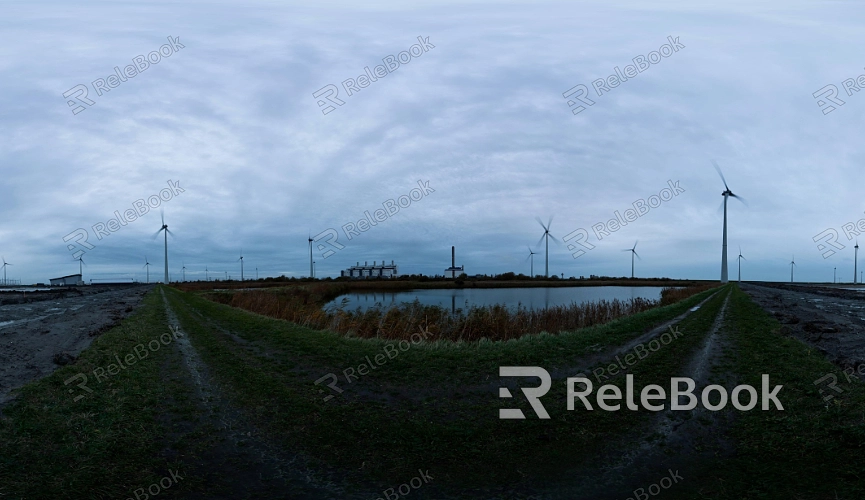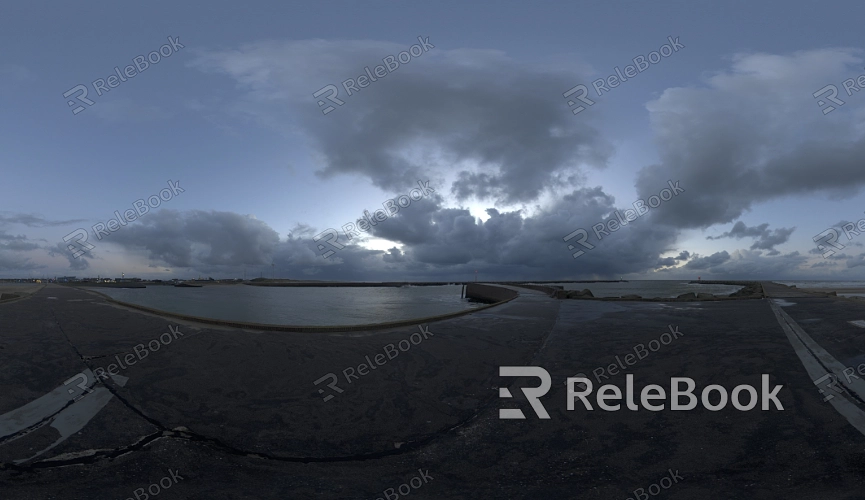Where Can I Download Free HDR Textures for Blender?
HDR textures are widely used in Blender and other 3D software to create more realistic lighting and shadow effects. These textures allow renders to capture subtle lighting variations within a scene, enhancing the overall realism and light interaction. This article explores how HDR textures impact lighting in Blender and highlights their importance, helping designers optimize scene lighting for more lifelike render results.

How Brightness Range of HDR Textures Affects Lighting
One of the most notable characteristics of HDR textures is their ability to offer a broader brightness range compared to standard textures. This allows them to capture both extremely dark shadow areas and very bright light sources.
When applied in Blender, the lighting system automatically adjusts the intensity and softness of light based on the highlights and shadows within the HDR texture. This is especially useful for simulating natural lighting conditions, such as the subtle changes in light during sunrise or sunset—something that can’t be achieved with lower dynamic range textures.
Providing Panoramic Lighting Information
HDR textures don't just offer local light data; they provide 360° panoramic lighting information. In Blender, this panoramic light enables light to enter the scene from multiple angles rather than from a single light source direction.
For complex scenes, panoramic lighting is crucial because it can realistically simulate indirect lighting and reflection effects without needing extra light sources, simplifying lighting setups and saving rendering time.
Accurate Shadow Rendering
Since HDR textures can capture more detailed lighting data, Blender can generate more accurate shadows during rendering.
Using HDR textures allows for more realistic refraction and reflection of light across different surfaces. The edges of shadows also transition more smoothly and naturally, especially after multiple light reflections. The shadows are no longer harsh but show a smooth gradient.
Improving Color Accuracy in Lighting
Beyond brightness, HDR textures also capture richer color information. In Blender, this means that the color of the lighting will be more precise, particularly when multiple light sources or complex materials are involved.
For example, when light passes through colored glass, HDR textures can better reflect the color shifts and translucency, resulting in more natural color representation of the light.
Impact of High Dynamic Range on Material Reflections
Another advantage of HDR textures lies in how they affect surface reflections. In Blender, light interaction with materials is essential, and HDR textures provide richer reflection details.
When rendering reflective materials like metal or mirror surfaces, HDR textures deliver more precise light reflections, giving objects a shinier and more realistic appearance.

Simulating Environmental Lighting
HDR textures can simulate real-world environmental lighting effects. In natural scenes, light sources are not only from direct light but also from multiple reflected and scattered sources. Blender’s HDR textures effectively simulate this complex lighting, enriching the scene’s overall light distribution and making the interaction between objects and their environment more natural.
For instance, in outdoor scenes, HDR textures capture the soft lighting from the sky, enhancing the scene's atmospheric feel.
Benefits of Real-Time Lighting Previews
In Blender, HDR textures are useful not only in final renders but also for improving lighting effects during real-time previews.
With HDR textures, designers can see lighting and shadow changes in real time while working, significantly improving workflow efficiency and reducing the need for constant adjustments. Additionally, the high resolution and dynamic range of HDR textures ensure that lighting details remain intact even with changes in perspective.
Optimizing Blender’s Physical Lighting Models
Blender’s lighting models are greatly influenced by HDR textures, especially when rendering using physically based lighting models.
HDR textures provide more accurate light data, allowing the physical lighting models to simulate how light behaves across different objects more precisely. This is crucial for high-precision renders, especially for scenes requiring realistic reflections and refractions.
Suitable for Various Lighting Types
HDR textures can be applied to different lighting scenarios in Blender, whether natural light, indoor lighting, or complex multi-light setups.
This versatility allows designers to use HDR textures in various environments without constantly changing lighting setups, streamlining workflows. For example, in an indoor scene, HDR textures can simulate sunlight coming through windows, creating natural lighting effects.
Creating Smooth Lighting Transitions
The detailed light data provided by HDR textures means smoother transitions between light and shadow. In Blender, this soft transition is critical for achieving a polished final render, especially in scenes with large shadow areas or multiple reflected light sources.
Smooth transitions not only improve the overall visual quality but also allow every detail in the scene to be rendered more delicately.
Using HDR textures in Blender significantly enhances the lighting quality, helping designers better showcase light variations and material reflections in complex scenes. Whether you're working on still renders or animation projects, the high dynamic range and rich detail of HDR textures offer powerful support for handling light in your projects. If you're looking for high-quality HDR textures, 3D models, or other resources to enhance your 3D work, Relebook is an excellent platform. Downloading textures and models from Relebook and importing them into Blender can greatly improve the quality of your projects.

